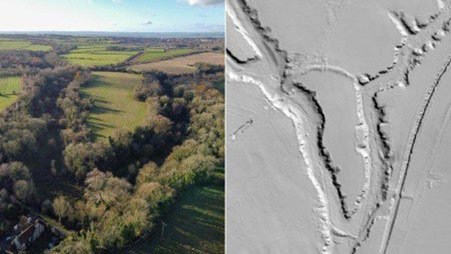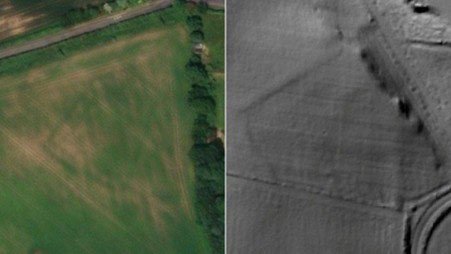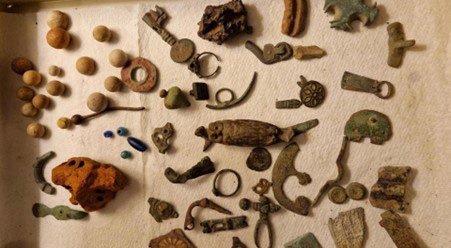
The Ninth Legion
Contributions to the news blog are welcome. See the guidance for contributors and contact Digital Manager Jacob Scott.
Search page
Search within this page here, search the collection page or search the website.
An Update on the Teynham Triton
A Farewell from the Chair of the Society Trustees
The Ninth Legion
“There are famous Roman sites in the south, and famous Roman sites in the north, but round here is a bit of a gap,”
Elliott argues that the Roman military’s siege techniques would have been psychologically devastating for the indigenous Corieltauvi tribespeople.
Kent Archaeological Society Trustee and Archaeologist Dr Simon Elliott believes he has uncovered evidence of a previously unknown battle involving the Roman Ninth Legion in Derbyshire, which disappeared from records around 80 years after its arrival in Britain in AD43. The Legion established a base at Leicester before pushing north. Dr Elliott suggests that superior Roman artillery led to a decisive victory near Creswell, where he has identified two potential Roman camps using aerial photography and Lidar technology.

Fig 1 - Drone and Lidar views of Markland Grips.

Fig 2 - Camp Hill (left) is thought to have been a temporary Ro man camp, lidar images suggest another may be present in a nearby field (right).
“It comes across a centre of resistance - in this case a hill fort - and it puts two camps to the north and south to seal it off, and those two levelled off areas, sited on a rise 30 metres above the fort, are the perfect place for artillery platforms, to bombard the area inside. The hill fort, with its triple ditch and bank closing off the headland is brilliant if you are fighting another Iron Age people, but it is completely useless against artillery.”

Fig 3 - Suggested sites for artillery, areas of disturbed groun d overlooking the fort.
Dr Elliott acknowledges the satellite images are not definitive proof but suggests there is more evidence. He has also found artifacts such as a Roman surveying tools and pieces of armour in nearby fields, supporting his hypothesis. “This includes a weight from a groma, a Roman surveying tool used only by legionaries, and a piece of armour, known as lorica segmentata, which was worn only by the legions,”

Fig 4 – Roman military items have been discovered locally by fa rmers over the years
